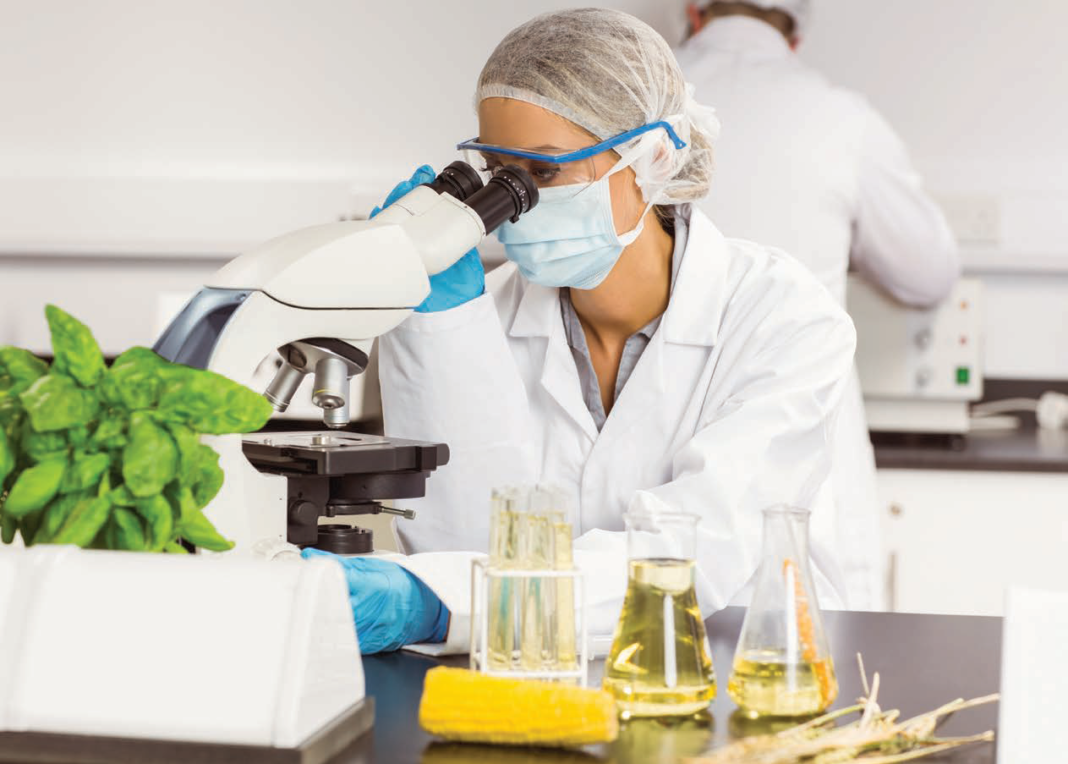Michael Gaffney peels back the layers of data surrounding the nutritional values of fruit and vegetable to find the future of Irish production may be small
Recent reports have highlighted that Ireland has the lowest percentage (1%) of agricultural land devoted to vegetable production in the EU-28. Given the market pressures on this sector from imported produce, there is a need for growers to develop new products and marketing strategies. The varieties of vegetables grown in Ireland are chosen for many reasons: customer preference, yields, disease resistance. But perhaps soon they could also be selected for their health properties.
With increasing concern over the falling nutritional quality of some fruits and vegetables and continuing debate over general ‘healthiness’ claims of particular agronomic practices, there may be a commercial opportunity for growers to select varieties based on the content of specific health-promoting compounds, known as bioactives. As part of the Irish Phytochemical Food Network (IPFN) research project, several varieties of carrots, broccoli and onions were grown over a two year period and assessed for specific bioactive compounds before and after minimal processing. In nature bioactive compounds (phytochemicals) play a role in a wide range of functions within plants, such as pest and herbivory deterrence (glucosinolates); prevention of UV-induced oxidative damage (flavanols) and pigmentation (anthocyanins). A large number of studies have shown that several phytochemical compounds can exert a significant positive effect on human health. Indeed, phytochemicals have been defined as non-nutrient chemicals found in plants that have biological activity against chronic disease. The overall aim of this work is to provide Irish growers and companies with the knowledge to optimise primary production and processing of vegetables to create healthy and convenient products.
Falcarinol is a polyacetylene found in carrots where its primary function is to protect against fungal diseases, but it also has been linked with anti-cancer properties. The content of falcarinol and several other polyacetylenes within different carrot varieties was assessed. Total and individual polyacetylene concentrations varied significantly. Total polyacetylenes ranged from 701 to 104 mg/g dw, with three wild Irish carrot species (obtained with thanks from Warwick HRI, UK) returning the highest values. The range of values from current commercial varieties ranged from 361 to 104 mg/g dw, with the content of falcarinol ranging from 34 to 164 mg/g dw. This data and data for other vegetables indicates that there is sufficient variation within commercial varieties to allow growers to select varieties for the increased content of a specific bioactive compound of interest. However, consumer research increasingly indicates that products, specifically fruit and vegetables, need to focus marketing on more than just health, and also promote other attributes, such as convenience.
Investigations into the effect of minimal processing indicated that removing the outer skin of the carrot with a brush had less effect on polyacetylene content than peeling. Also, how carrots were prepared (shredded, batoned, disced, cubed) had a significant effect on the retention of polyacetylenes: shredded carrot showed the largest decrease while carrot cut into batons retained the same polyacetylene levels as unprocessed carrots. When stored in modified atmospheric packaging, carrots maintained or increased their polyacetylene content over a 15 day period.
GLUCOSINOLATES
Glucosinolates are sulfur-containing compounds found in many brassica species. The glucosinolate, glucoraphanin combines with the enzyme myrosinase to form the isothiocyanate, sulforaphane. This compound has been shown to be a powerful antioxidant and also to be anticarcinogenic. Climate had a significant effect on the levels of glucoraphanin found in years one and two on a range of 35 commercially available broccoli species. Overall, some varieties had comparatively high levels of glucoraphanin in both years, while other varieties did differ significantly from year one to year two. There is a specifically bred variety of broccoli for glucoraphanin accumulation ‘Beneforte’, which typically records glucoraphanin levels 3.5 times higher than ‘Marathon’ (used as a standard variety). Over the two years, we identified an existing commercial variety which displayed an increase above ‘Marathon’ of 2.6 and 3.4 times (depending on year). The variety we have identified is a dome-shaped broccoli as opposed to a tenderstem variety (such as ‘Beneforte’) and therefore may be readily acceptable to the market. This variety develops in approximately 80 to 100 days in Ireland, producing medium-sized heads. It may potentially be a more acceptable variety for marketing purposes if the trait of comparatively high glucoraphanin accumulation remained consistent.
While glucrophanin was shown to be influenced by the impact of climate and variety, other glucosinolates were shown to be affected by the agronomic practice. Over a four year experiment, broccoli was grown under both organic and conventional practices in north Dublin. Previously published research identified that within organically grown broccoli crops, two glucosinolate compounds, glucobrassicin and neo-glucobrassicin had elevated levels, a finding confirmed by this project. This finding and confirmation, across two different types of study (field experiment and market purchase ‘basket’ survey) strengthens the conclusion that these two glucosinolates can be enhanced by agronomy. Separate experiments we conducted did indicate that the
“Phytochemicals have been defined as non-nutrient chemicals found in plants that have biological activity against chronic disease”
level of nitrogen input did not significantly alter the levels of glucosinolates found in broccoli crops, suggesting that the drivers of the difference observed in the organic plots were not due to the availability of nitrogen. Overall, these findings do suggest that by combining knowledge of the variety and agronomic system, we can design crop production systems optimised towards to produce crops with specific traits. However, overall the data suggests a deep complexity in the expression of these compounds, with the main drivers,
in order of importance, being climate, genetics (variety selection) and agronomic practice.
One interesting observation was that by years three and four of the organic, conventional experiment, crop yields from the plots had largely equalised although the time to harvest was still slightly longer with organic broccoli taking seven to 14 days on average.
Similar to the data obtained from carrots, minimal processing did impact on the retention of glucosinolates broccoli. Steaming broccoli was shown to be the cooking method which minimised glucosinolate loss, while boiling broccoli reduced the glucosinolate content by 76%, with 80% of the lost glucosinolates being leached out into the boiling water.
Commercially, the exploitation of research such as this is difficult, as the European Food Safety Authority has very strict criteria on product labelling, particularly in the area of health claims. However, it would be possible for Irish growers to use research such as described above to differentiate their crops from imported produce and create interest from the buying public.
Acknowledgments: The research described was funded by DAFM under the Food Institutional Research Measure (06TNITAFRC06). The input of Dr. Kim Reilly, Mr. Leo Finn, Dr. Dilip Rai (Teagasc) and Dr. Nigel Brunton (UCD) is acknowledged. ✽
  |










